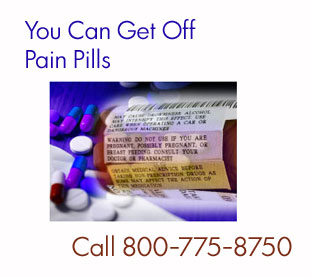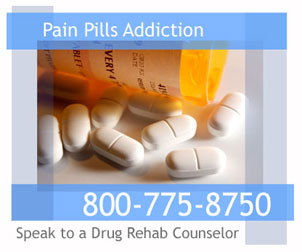
For many people, this addiction starts with the use of pain medication after an injury or surgery or maybe just a tooth extraction. The pain may be real in the beginning but the painkiller use goes on after the pain goes away. Maybe the person just seems to feel better and not have so many aches and pains when they take those pills.
Many people will not realize that there is any problem when they need more of that painkiller just to keep the aches away. But you see, the body is developing a tolerance to the opiates, meaning that more of the drug is needed to create the same relief that a lower dose used to do.
This can happen again and again, with the doctor increasing the dosage each time the patient reports that the drug is not handling the pain. But the doctor may finally call it quits on the increases. He may even refuse to prescribe any more pain medication at all. But now the person needs the drug just to feel normal, just so he doesn’t don’t feel achy and sick, just to function. Now the person is in trouble because there’s no legitimate prescription to rely on.
So what’s the answer? There’s several choices. The person can go “doctor shopping” for their higher dosage needs. This means she selects three or four or more doctors in different parts of town or even different towns and makes the same complaints to each one. Then fills the prescriptions at different pharmacies.
Or he can go to a pain management clinic, one that doesn’t even require a physical exam. Of course, these are being closed down in many states so this might only work for a little while.
Or she can figure out a way to commit prescription fraud. Maybe at one of those doctor’s offices she can steal a prescription pad and fill out her own orders for drugs. Or pretend to be a doctor’s office and call in a prescription.
Or he can commit theft, stealing pain pills out of a friend’s purse. If he has more nerve, maybe he can hold up a pharmacy and make off with the OxyContin or hydrocodone.
She might be able to find an internet pharmacy that will ship her drugs from India or China but there’s no telling what the purity or dosage of these drugs would be like.
Or there are drug dealers who traffic in these drugs along with heroin and cocaine. If any of these other actions land him in jail, he can probably hook up with some good connections there.
Of course, there is one other option. She can switch to heroin, as many people do when their sources of prescription pain medication dry up. If she is lucky, she won’t get really pure heroin unexpectedly which might cause her to overdose by accident.
These Were the Choices Many Americans Faced on their Way to Becoming Addicted to Pain Medication
Addiction to painkillers is rather unique for the way that many people start with legitimate use and progress to addiction. The same can’t be said for heroin or cocaine, for example.
Recent statistics released by the Substance Abuse and Mental Health Services Administration (SAMHSA) show just how bad it’s gotten. According to SAMHSA, prescription drug addiction is up 430% from 1999 to 2009, based on the number of people entering treatment for this problem.
Flanking this statistic is another fact: In 2010, the most popular prescription drug in America was hydrocodone, an opioid pain reliever, combined with acetaminophen – aka Vicodin or Lortab. There were 131.2 million prescriptions written for this drug in 2010.
Addiction Calls for Thorough Rehab to Restore the Addicted Person’s Ability to Live Sober Again

When a person loses his sobriety, he needs a drug rehab program he can rely on to bring him back to lasting sobriety. While some programs state a recovery rate of 10% to 20%, the Narconon drug and alcohol rehabilitation program maintains a success rate of 70%. There’s no secret to it – it’s just an effective rehab program that thoroughly addresses the damage done by addiction and that teaches each person the life skills needed to make drug-free decisions.
Narconon objectives are to offer a long-term residential treatment program that will give a recovering addict enough time to claim back the personal integrity that was lost during addiction, and to show each person how he or she can stay stable in the face of life’s difficulties and stresses.
Then add the unique Narconon New Life Detoxification Program that helps each person reduce the cravings that result from extended drug use. This program utilizes time in a low-heat sauna combines with generous nutritional supplementation and moderate exercise to activate the body’s ability to flush out old stored drug toxins. The elimination of these toxins has been proven to help recovering addicts lower cravings or even make them disappear completely.
You can get off pain pills. Before you commit to any drug treatment program, find out about the Narconon program by calling Narconon International at 1-800-775-8750 today.
Resources:
http://www.huffingtonpost.com/jamie-lee-curtis/king-of-pain_b_240998.html
http://www.samhsa.gov/data/DASIS/teds09st/teds2009stweb.pdf
http://www.samhsa.gov/newsroom/advisories/1112074117.aspx
http://www.clinicalcorrelations.org/?p=4888
